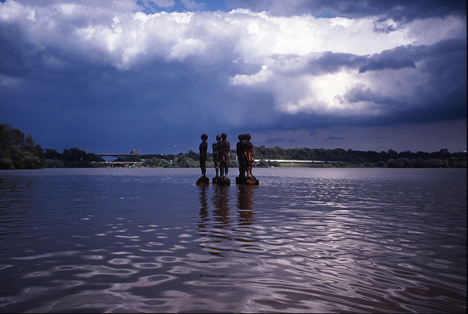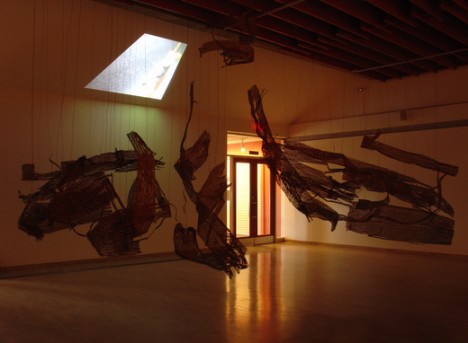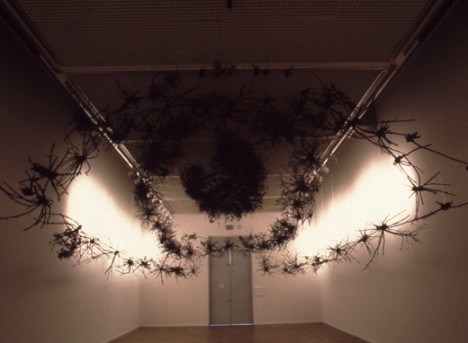With its newly improved Super Resolution Zoom, the Pixel 4 makes a case for itself as a replacement for a compact camera with a 4-6x zoom range. The kind you might bring on vacation – something with a sensor that’s a little bigger and a modest zoom that won’t be too cumbersome while you explore your destination.
I took the Pixel 4 as my primary camera on a recent trip, but just to satisfy my curiosity, packed the Canon PowerShot G5 X Mark II alongside it. The Pixel 4 fell short in a couple of ways, but overall it did the job well enough that I wouldn’t have regretted taking it as my only camera. Here’s what it did well, what the dedicated camera still does best, and why I think those differences don’t matter much to most people who take pictures.
 |
A military fort-turned-prison is kind of a weird place to take someone for their birthday, but my fiancé is into that kind of thing. Plus, it was a great excuse to quote Sean Connery saying ‘Welcome to the Rock,’ for several weeks leading up to the trip. I’d been to Alcatraz before, so I was happy to spend a little more effort and concentration on taking photos.
As you might imagine, a jailhouse provides lots of low light photography opportunities – a task that the Pixel 4 is well equipped for. Night Sight does a little bit of computational magic to create surprisingly detailed images in low light (and good light for that matter). But even the default camera mode does a very nice job in dim conditions, thanks to its ability to capture multiple frames, analyze them and assemble the best bits into one final image on the fly. In fact, it out-performed the Canon G5 X II in the situations where I tested both.
The moderately low light images below show the Pixel 4 producing a slightly more detailed, less noise-smudged image in its standard camera mode versus the Canon G5 X II’s out-of-camera JPEG.
|
Pixel 4 – 100% crop |
Canon G5 X Mark II – 100% crop |
Zoom is another story. Google has improved the Super Resolution digital zoom in the Pixel 4, boosting image quality thanks to a combo of clever algorithms and the new telephoto lens. The company claims that the camera will produce decent results up to 6x zoom, but admit that zoom is a difficult problem to solve with the current technology.
Absolutely nobody is claiming that the phone’s 4-6x zoomed images can take on a traditional camera’s zoom pixel-for-pixel, but because I’m curious I checked it out anyway. Both cameras are at 5x zoom in the example below (about 135mm equiv. for the Pixel 4 and 122mm equiv. on the G5 X II).
|
Pixel 4 @ 5x digital zoom – 100% crop |
Canon G5 X II 5x optical zoom – 100% crop |
The difference is obvious in the 100% crops above, and can be easily seen even at 50% – but then again how often will those photos be viewed on anything bigger than a computer screen? If I planned on making prints of these images, I’d still want a traditional optical zoom. But I rarely print images and I suspect I’m in the majority of the picture-taking public.
There was one more Pixel 4 camera feature that I found myself relying on that the G5 X II doesn’t offer: Dual Exposure Controls, which doesn’t mean what you think it means.
Dual Exposure Control puts a higher level of control over shadows and brightness, along with the ability to adjust them independently of each other, all before image capture
An advanced compact such as the G5 X II provides plenty of manual controls over exposure settings. What it doesn’t provide is the ability to finely tune shadows and brightness before you press the shutter: you can instead select low, medium or high levels of its Auto Lighting Optimizer.
The Pixel 4’s Dual Exposure Control gives you direct control over shadows and brightness, along with the ability to adjust them independently of each other, all before image capture. This phone and previous Google devices would do this automatically expose for backlit subjects and high-contrast scenes, but the dual controls allow you to increase or minimize the effect, depending on what you want.
 |
| The Pixel 4’s Dual Exposure Controls allowed me to slightly boost shadows in this image before pressing the shutter. |
Of course the G5 X II offers plenty of editing flexibility with in-camera Raw processing, but control over settings is limited. For anything more advanced than some basic tweaks, you’ll need to take your Raw images into Lightroom or the like. On the Pixel 4, it all happens in-camera.
This potentially changes how you approach a high-contrast scene. Normally I’d expose for the highlights and bring up the shadows later, which works well but leaves me without an image to share now. This is annoying because social media has robbed me of any patience I once had. The Pixel 4 lets me make those adjustments before I take the photo – rather than having to wait until I can process the image later.
If I was keeping score, I could award a lot more points in favor of either device. Color science backed by decades of fine tuning, better picture-taking ergonomics, flip-out touchscreen for low angle shots: all points for the traditional camera. Integrated photo storage, seamless image sharing, always in your pocket: point, point, point for the Pixel 4.
What speaks louder than any arbitrary score-keeping though is the fact that I saw few, if any, compact cameras among my fellow tourists at Alcatraz. I saw mirrorless cameras, DSLRs, a few superzoom cameras and of course, lots of phones. To most of the photo-taking population though, the compact camera – even a really nice compact camera – is already history.
Articles: Digital Photography Review (dpreview.com)

















You must be logged in to post a comment.